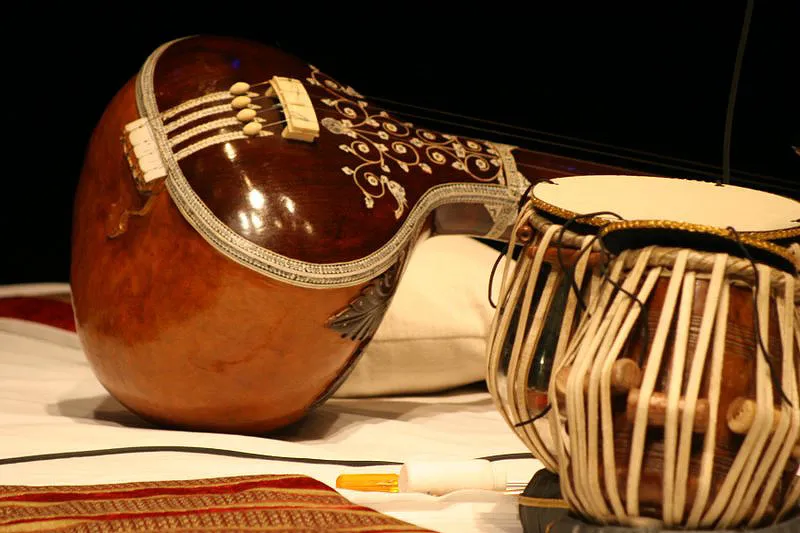SWARA(SOUND OF A MUSICAL NOTE)
The word Swara ( स्वर , generally pronounced as swar or swara and not swaraa) is found in Vedic Literature, particularly in the Samaveda, where it means accent or tone or a musical note on an octave. In the general sense swara means tone and applies to chanting and singing. More comprehensively, it is the ancient Indian concept about the complete dimension of musical pitch.
Read MoreTALA
Tala in Indian Classical music is a term referring to music meter, a measure of musical time or a rhythmic beat or clap. It can even mean verbally striking small cymbals or a percussion instrument. Tala, the time cycle along with raaga (melodic framework) is one of the two foundation elements of Indian music. While tala carries the musical meter, it does not necessarily have to follow a regular pattern. The beats are arranged hierarchically depending on how the piece of music which is to be performed.
Read MoreRAGAS
The term Raga or Ragam has no counterpart in Western Music. The concept of Raga is almost 2000 years old. The word ‘Raga’ is derived from the Sanskrit root ‘Ranj’ (to colour, to tinge, to provide delight). The word has originated from ‘Ranjayati iti Ragah’ which means ‘that which gives pure pleasure is called Raga’. The concept of Raga is based on the idea that certain particular pattern of notes evokes a heightened state of emotion.
Read MoreNADA YOGA
The Upanishads and the Vedas say that in the beginning there was absolutely nothing besides sound. The universe evolved from that sound. Therefore, the structure of the universe is based on sound vibrations or Nada. And Nada Yoga means ‘Union through sound’. It is an ancient Indian system of inner transformation and realigning the inner balance through sound and vibrations.
Read MoreVEDIC MUSICAL INSTRUMENTS
Vedic literature refers to various types of musical instruments. In the Rigveda, musical instruments mentioned have basically only been used as accompaniments to sing and dancing. There are no references to playing them solo.
Read MoreIMPORTANCE OF CHANTING VEDIC MANTRAS
As mentioned earlier, the Samaveda is the ‘storehouse of knowledge of chants’. The concept of mantras is based on the power of sound. The mantras or Vedic hymns, the oldest part of the Vedas, are primordial rhythms of creation. By reciting them the cosmos is said to be regenerated as these mantras enliven and nourish the different forms of creation at their base. The Vedic hymns themselves assert that they were skilfully created by Rishis (sages), after inspired creativity.
Read MoreAbout Me
“Hello! I am Krish Lambah, a senior school student at the Cathedral and John Connon School in Mumbai. I am a history buff and love exploring different aspects of history in my areas of interest. In addition to being a history buff, music is an integral part of my day. I listen to music whilst studying, working out, sometimes even whilst sleeping! I play the drums and the piano and am a drummer in my high school band. My music teacher gave me some great insights on how music has progressed since ancient times, so whilst researching this history, I documented some of my finding into this website. I hope you will enjoy the contents and feel free to write to me on LinkedIn, with any suggestions on how to improve this website. Let us explore the rich heritage of our classical music together!
Music does a lot of things for a lot of people. It’s transporting, for sure. It can take you right back, years back, to the very moment certain things happened in your life. It’s uplifting, it’s encouraging, it’s strengthening.” — Aretha Franklin

